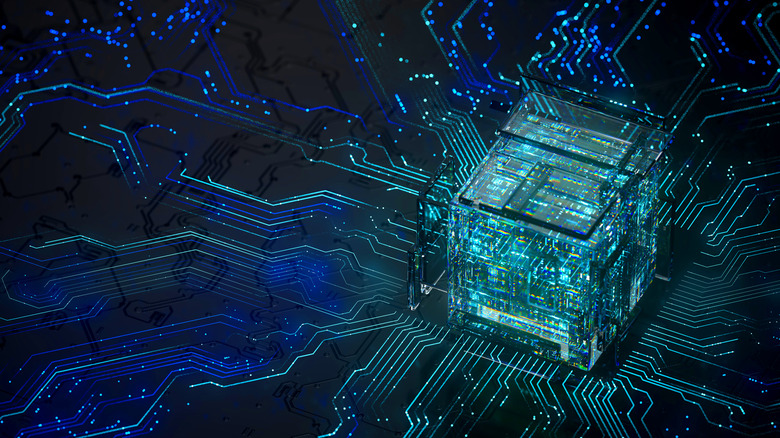Quantum teleportation has officially been achieved by scientists, which is exciting news, but probably not for the reasons you’d think. It does not involve the teleportation of objects or people a la “Star Trek,” but rather the sharing of data between two quantum computers. Scientists have known it’s possible to “teleport” information from one space to another via quantum entanglement instantaneously for a while now. A recent report, published in Nature, details how a University of Oxford team sent a quantum algorithm, wirelessly, from one quantum processor to another. The goal was to essentially allow for the two extremely powerful computers to work together like one supercomputer. That gives the tandem computers a boost in power to solve problems they wouldn’t otherwise be able to, and it was all fueled by the instantaneous transfer of information through quantum entanglement.
Quantum entanglement is when two particles, like photons or electrons, remain connected or “entangled” even across great distances. In the case of quantum computers, those particles are qubits — the basic unit that denotes quantum information. However, through the experiment, nothing was actually moved; the light particles (data) still remained in the same place while separated by a distance of two meters. So, realistically, the teleportation in question is nothing like the traditional concept of teleportation where matter is moved from one location to another. Instead, quantum entanglement allows the two computers to see each other’s data, sharing that information instantaneously across huge distances and pooling resources. This breakthrough will enable distributed quantum computing where many remote quantum processors can be combined into a unified quantum computer.
What the heck is distributed quantum computing and why does it matter?
All this talk about quantum everything sure can make your head spin. When explained in words on a screen it seems a lot more complex than it is. Quantum computers are really just super powerful computers because of how they use quantum processing and quantum data, but that also enables some weird stuff. Scientists can reverse time inside a quantum computer, for example. Where standard computers store and manipulate data as 1s and 0s, referred to as binary digits, quantum computers use a unit of measurement called qubits. Binary digits can only be one state or another, so a 1 or a 0, versus qubits which can be all states simultaneously. In other words, qubits can essentially store an infinite amount of information . But more importantly, scientists must figure out how to use the possibilities of that storage in a meaningful way.
Simply put, quantum computers are extremely powerful. Google built a revolutionary supercomputer that can instantly calculate problems that take decades for rivals. Knowing that, it’s easy to understand why distributed quantum computing would be exponentially more capable. In a distributed configuration, individual quantum processors spaced out remotely can communicate to solve one superproblem, pooling their resources. That is precisely what was achieved in the experiment. Imagine it as a form of cloud computing in the quantum realm. This could also empower quantum internet, the next generation of internet connectivity, not unlike the internet that exists today except with the exchange of quantum data. Unfortunately, as exciting as this news is, no, humans can’t teleport yet, or magically teleport ice cream cones from a store to their home. That said, it does look like there will be ridiculously powerful computers soon. Like really, really powerful.


